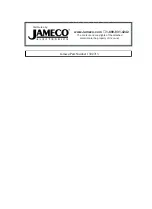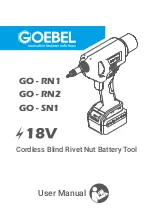
INTRODUCTION TO SERVICING
This section is designed to help you service and maintain the aircraft in
a safe and efficient manner. The intended user of this handbook is the
pilot, not the aircraft's mechanic. The information is intended as a
guide to maintaining the aircraft and assumes any/all work
accomplished is of such quality that structural or aerodynamic integrity
is not compromised. Inspections, inspection periods and servicing
information should be used as a guide.
51% RULE
This Lancair is amateur built and is unique in that, under the proper
conditions, the builder can become that aircraft's "Certified Repairman"
under the Federal Aviation Agency rule that states that the applicant
must have built the majority of the aircraft, thus the so-called "51%
Rule." This has many far reaching advantages which allow the builder
to service, alter and maintain that aircraft throughout its service life.
WARNING
It remains your responsibility as pilot to ensure
the machine remains airworthy. For example, the
altimeter and transponder must be checked each
24 months by a certified repair station before the
plane can be flown.
All limits, procedures, safety practices, servicing instructions and
requirements contained in this handbook should be considered
mandatory. It is strongly recommended that you secure the services of
an FBO familiar with Lancairs, or at least this type of amateur built
aircraft, for support. This will benefit both you as the owner and the
FBO by becoming your second pair of
eyes
on an "as required" basis.
Lancair or your local EAA chapter can supply you with helpful
information in this regard.
NON-OWNER BUILT AIRCRAFT
If you purchased this aircraft from the builder, it then falls under the
rules of all other aircraft and owner/pilot maintenance is significantly
restricted. It is then treated just as a commercially-built aircraft except
that an AI is not required for annuals — any A & P can perform
annuals on an "amateur built" aircraft. (The original builder still may
perform any and all work on the aircraft for which he holds a
repairman's certificate.)
For aircraft registered in the United States, FAR Part 43 defines the
types of servicing and maintenance that a certified pilot who owns or
operates the aircraft may perform. For other countries, the
registry of
that country should be consulted to define the work that may be
Summary of Contents for ES-P
Page 10: ...Basic Airframe Dimensions ...
Page 22: ......
Page 38: ......
Page 60: ......
Page 80: ......
Page 82: ...CARE AND CLEANING 10 EXTERIOR PAINTED SURFACES 11 ENGINE 11 RECOMMENDED SERVICING 12 ...
Page 94: ......
Page 95: ...SECTION 9 SUPPLEMENTS TABLE OF CONTENTS ALTITUDE REGULATIONS 2 ALTITUDE REACTION 2 ...
Page 98: ......
Page 108: ......
Page 120: ...WORK PERFORMED ...
Page 122: ...Idle cut off Static rpm Idle mixture Check engine for oil leaks ...
















































